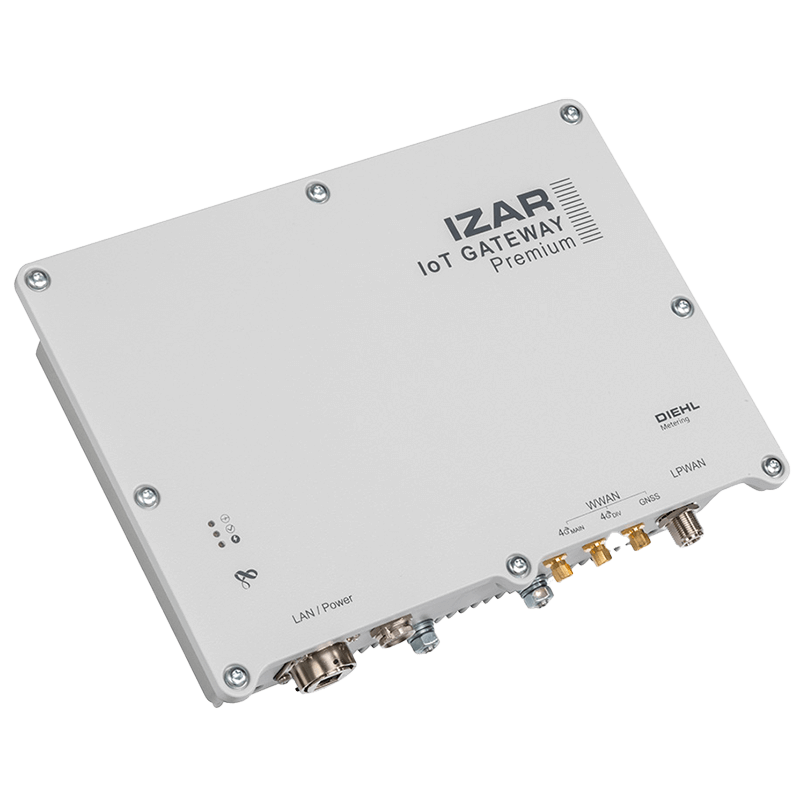mioty®/OMS SOLUTIONS
SMART METER TECHNOLOGY
Collect data
adapter CHENOA

adapter JONAH

adapter JONAH
Transmission via mioty®
according to ETSI standard
DIEHL-
mioty® Gateway

Transmission via LTE
IZAR Plus-
Portal
Analyzing in cloud
OMS over mioty®
LTE
Collect data
Transmission via mioty®
according to ETSI standard
Transmission via LTE
Analyzing in cloud
OMS over mioty® with communication adapters from WEPTECH
WEPTECH has been a full member of the mioty® Alliance since 2020 and a board member since 2023 and was involved in various Alliance committees at a very early stage. The first successful POCs and a steadily growing demand for mioty® solutions formed the basis for a consistent expansion of the company's own product portfolio, thus documenting WEPTECH's mioty® technology expertise in terms of software and hardware.
Retrofitting – per OMS over mioty®
WEPTECH has now added two new communication adapters for Elster diaphragm gas meters to its product range for retrofitting gas meters with remote readability (retrofitting) for smart meter applications. The JONAH communication adapter is designed for the Elster gas meter of the BK-G series with an AE5 interface (absolute encoder), CHENOAH for the Elster gas meter with pulse interface.
Both adapters are battery-operated and can be attached to the meter precisely as a clip-on module. The wireless connection to a mioty® gateway, e.g. to the "mioty® premium Gateway" from Diehl Metering, is established with both adapters via OMS® over mioty®.
Integration of gas meters into the mioty® - Eco System
From there, the meter data (in accordance with the OMS specification and wM-Bus standard EN 13757-4) can be routed to the IZAR platform. As a comprehensive connectivity solution from Diehl Metering, the IZAR system converts the received meter data into evaluable information (software as a service) for monitoring, analysis or billing applications.
LPWAN technology at a glance
Sigfox, LoRaWAN, NB IoT and mioty®. These were the chronological steps in the development of "Low Power Wide Area" (LPWA) technologies, all different radio network technologies that were developed specifically for the Internet of Things (IoT). The task and challenge during development was to bridge large distances using battery-powered sensors in the 868 MHz band.
Typical applications
Typical IoT applications include condition monitoring of systems, intelligent parking, efficient waste management, object location in logistics, moisture monitoring in agriculture and data transmission from consumption meters for monitoring or billing purposes, i.e. smart metering.
LPWAN Technology
SELECTION CRITERIA
In addition to the costs of setting up and operating the infrastructure, the main criteria for selecting suitable "LPWAN technologies" include availability, data throughput, data rate, energy consumption, range, security during data transmission and the prevention of data loss. The problem with the latter point is that the error rate when sending data packets increases with increasing distance depending on the transmission path as a result of interference and telegram collisions, in some cases considerably for all the wireless technologies listed. This is precisely where mioty® technology comes in.

Interferer - Interference immunity of mioty® technology
Source: mioty® alliance
mioty®
INNOVATIVE LPWAN TECHNOLOGY

mioty®, a development of the Fraunhofer IIS Institute, is a standardized, software-based radio technology for the construction of secure and powerful low power area networks for large industrial IoT applications (massive IoT / industrial IoT). The main difference to other LPWAN technologies is the "telegram splitting", the "frequency hopping" and a FEC (forward error correction) with 50% efficiency.
What is the outstanding feature of mioty® LPWAN technology?
The mioty® technology developed by Fraunhofer IIS defines new standards for radio-controlled data transmission in terms of scalability, cost efficiency, range, transmission reliability and battery life of up to 20 years.

Source: Fraunhofer IIS (https://www.iis.fraunhofer.de/ )

Telegram splitting according to ETSI TS 103 357
Source: mioty® alliance
Telegram splitting, frequency hopping and forward correction
The possibility of data loss is virtually eliminated; receiving only 50% of the data packets is sufficient to complete them again at the recipient's end. These special technological features make mioty® the ideal basis for solutions in the industrial sector and the Internet of Things.
In addition, mioty® complies with the standard of the European Telecommunications Standards Institute (ETSI standard compliant according to ETSI TS 103357).
The data packet is split into several sub-data packets, which are transmitted at different frequencies and at different times. The advantages of mioty® technology are that a mioty® gateway can receive up to 150 telegrams simultaneously and thus realize a daily transmission capacity of approx. 3.5 million telegrams. The efficient channel coding also increases the range of mioty® compared to other radio systems at 868 MHz by up to a factor of 10.
